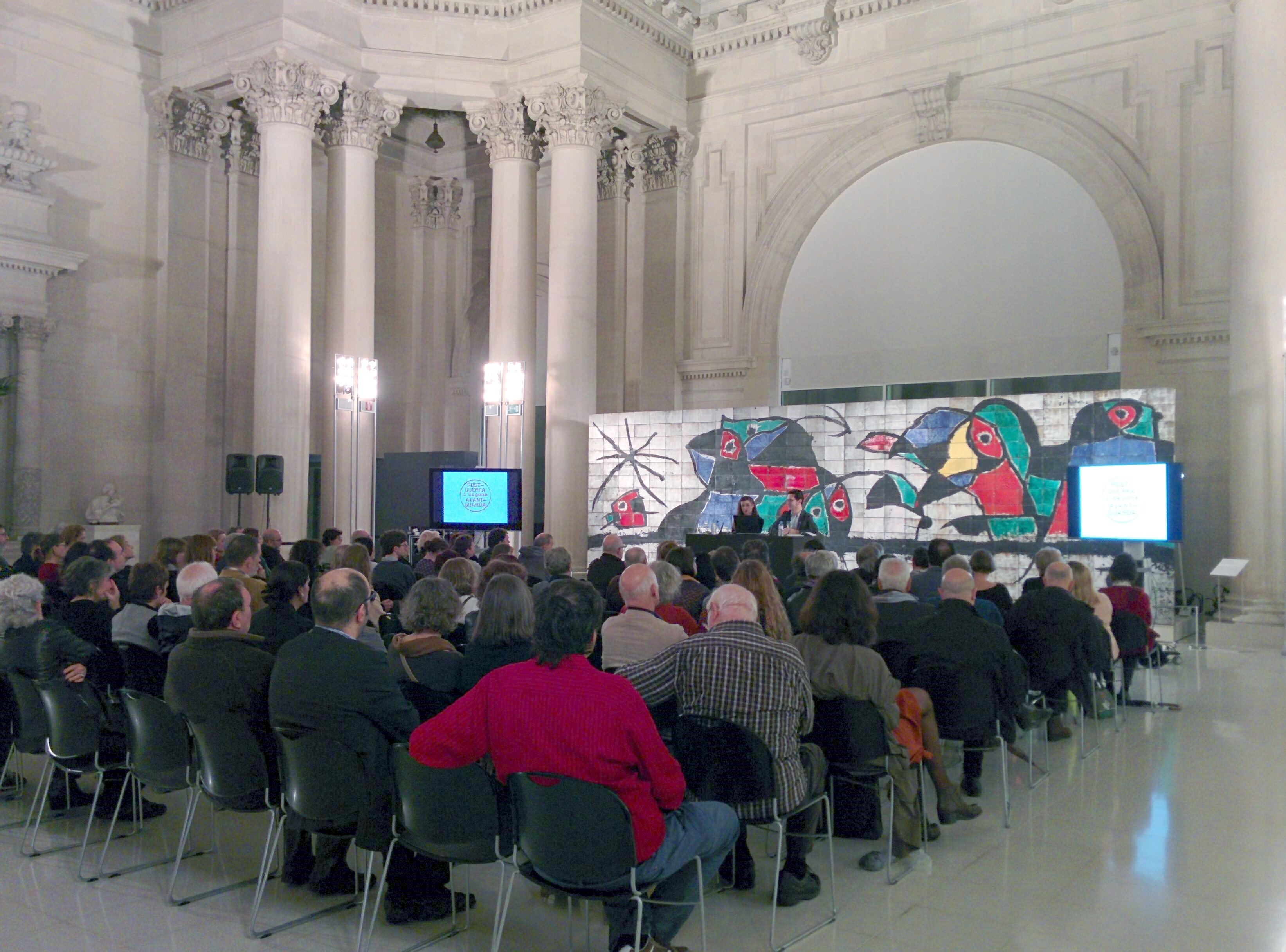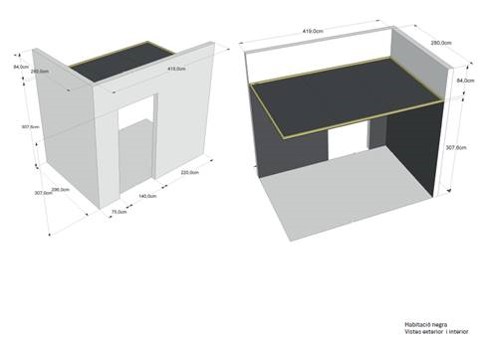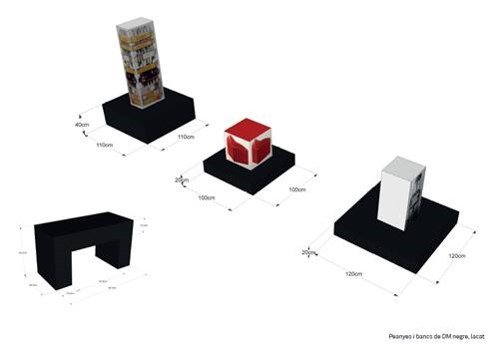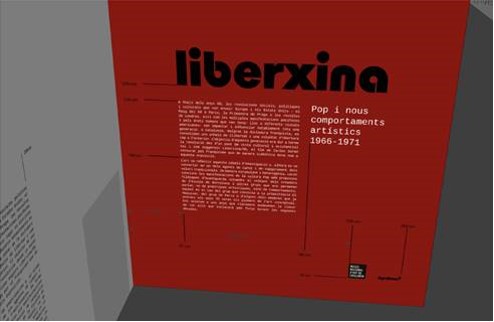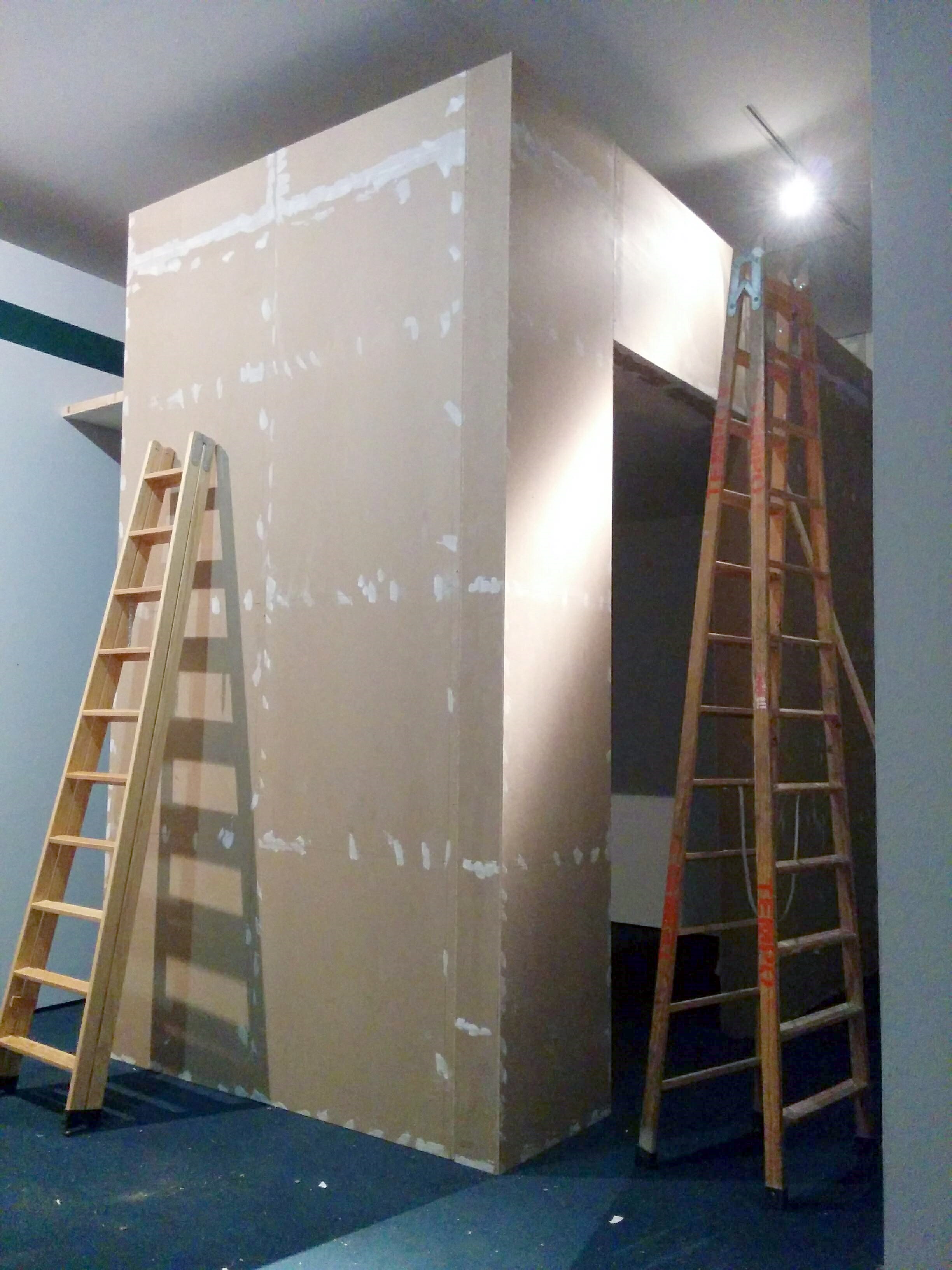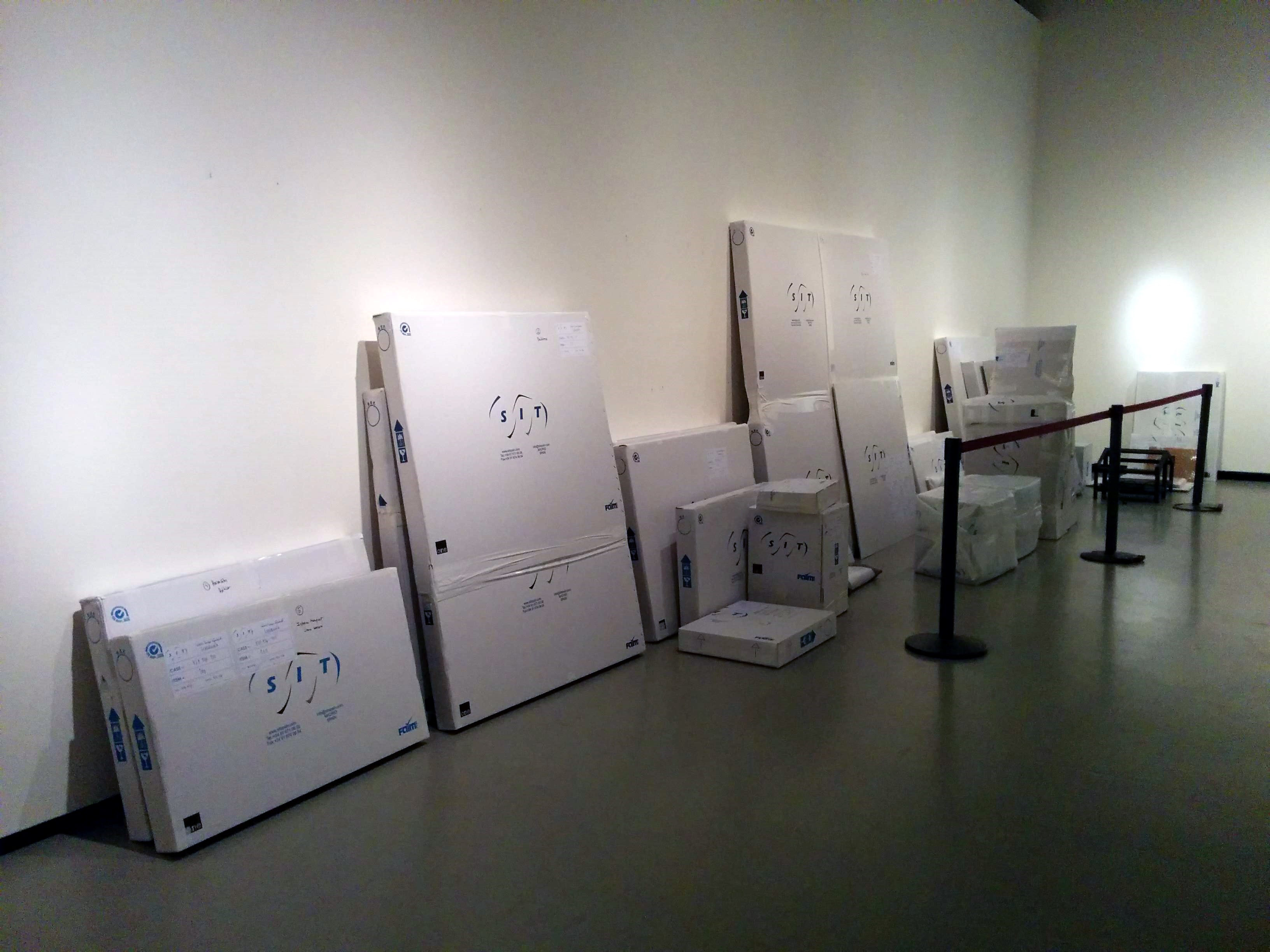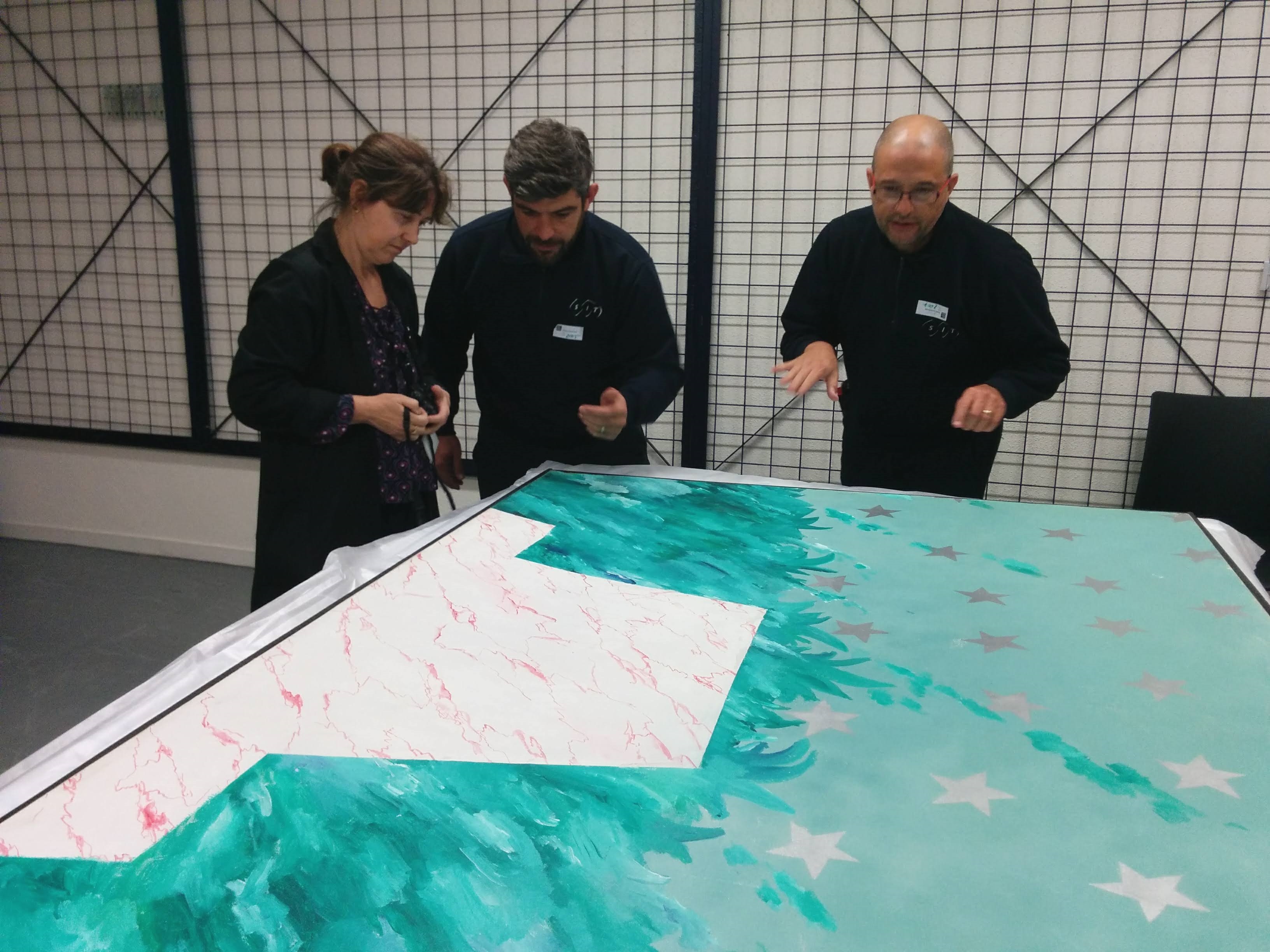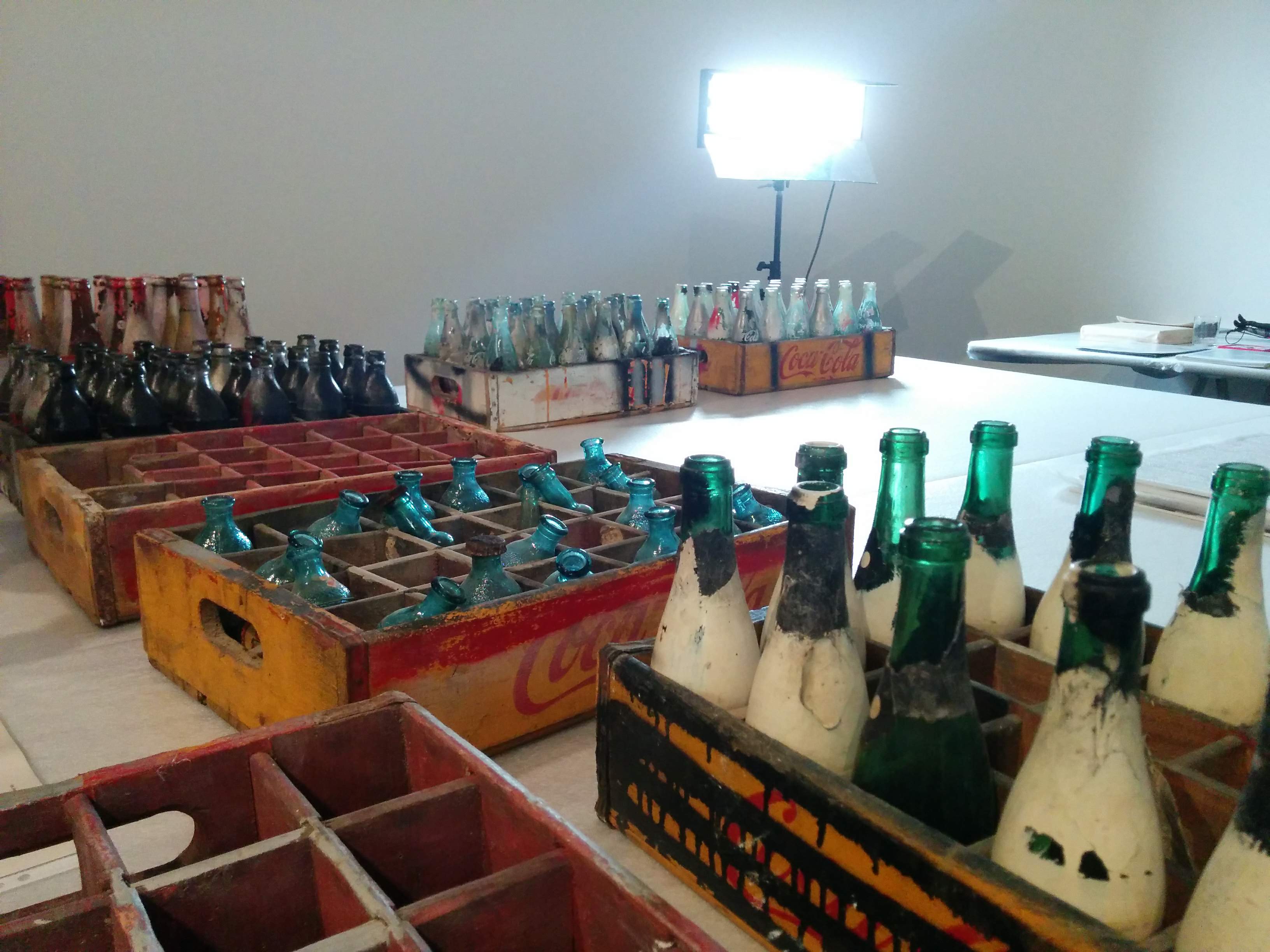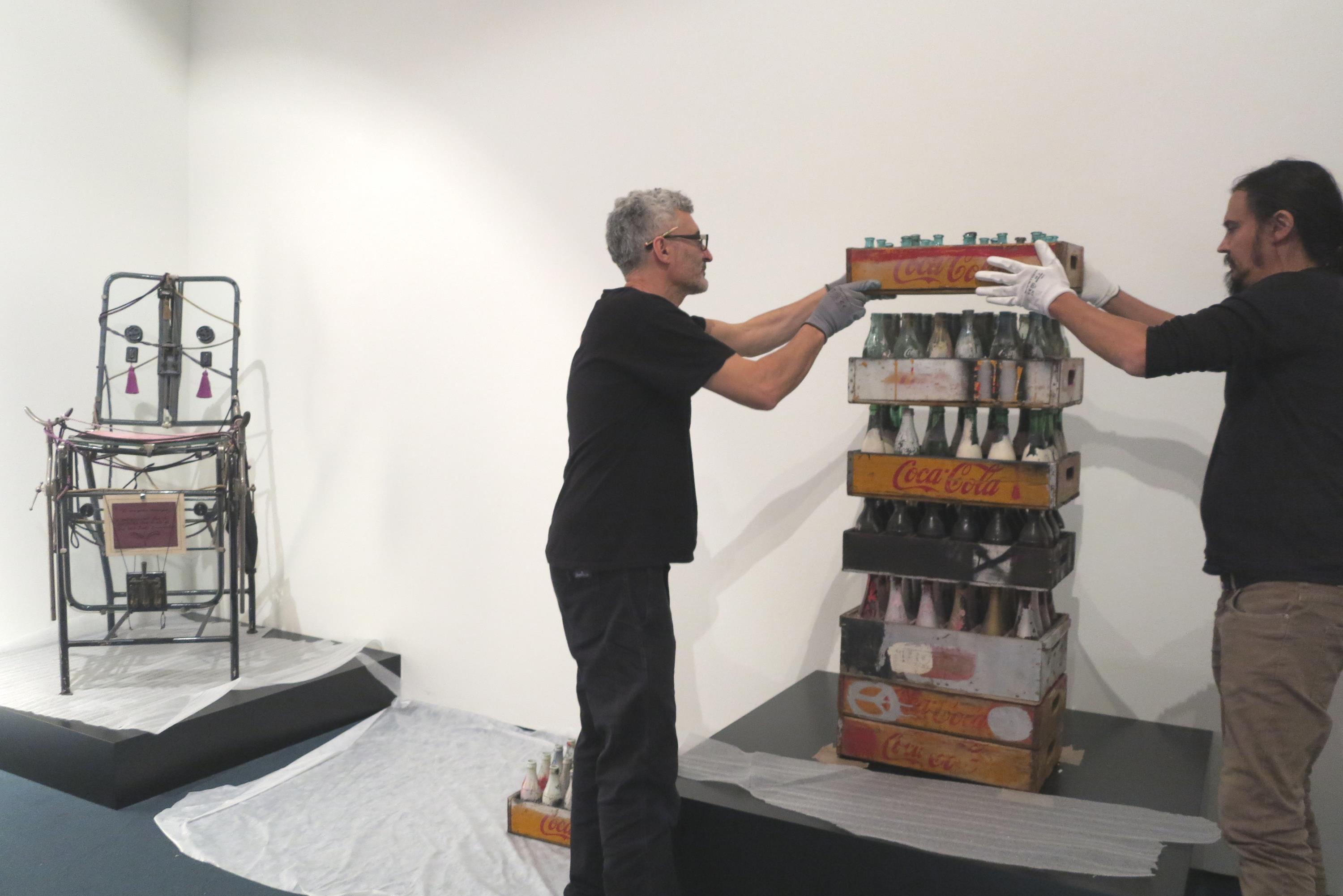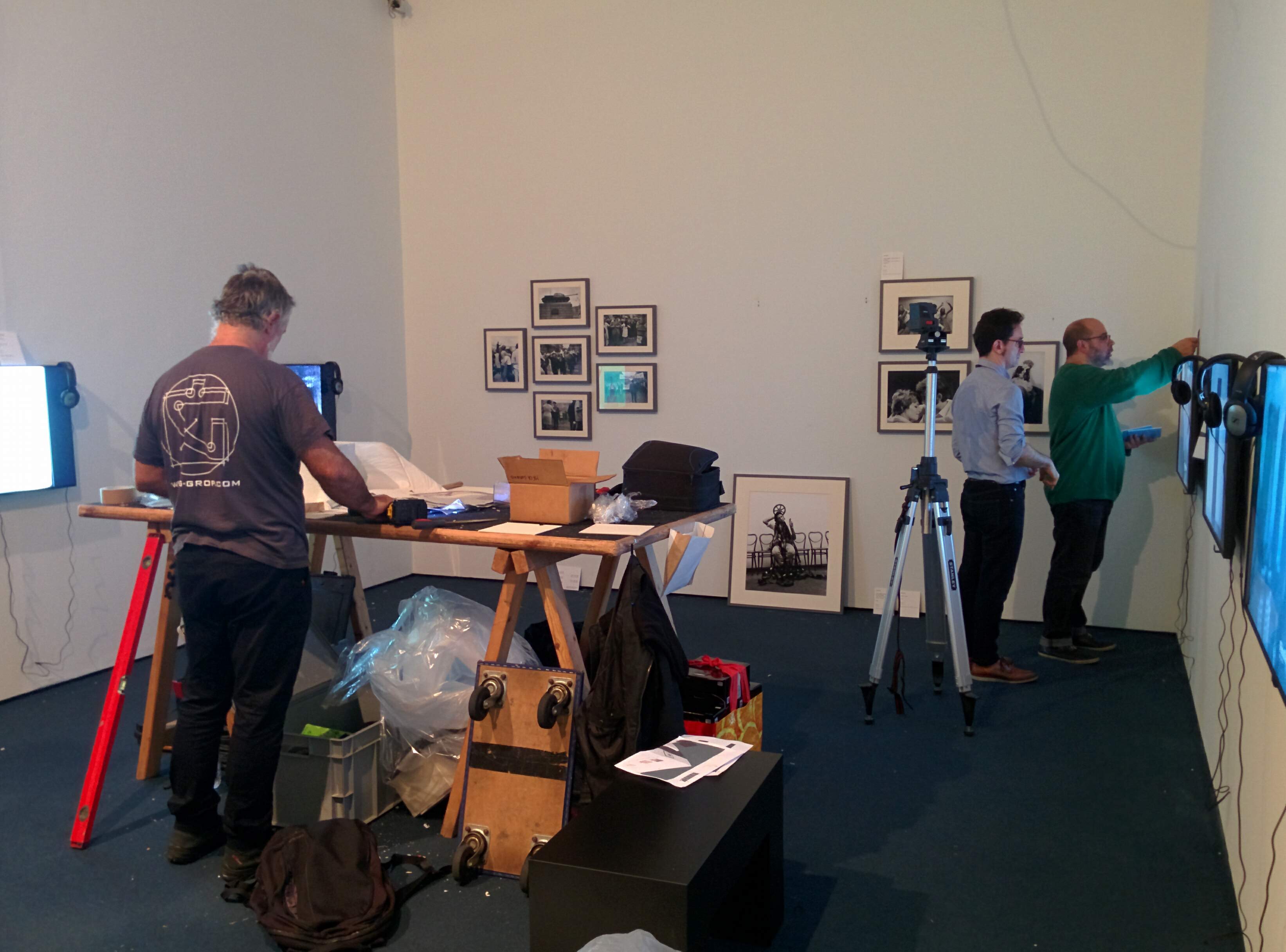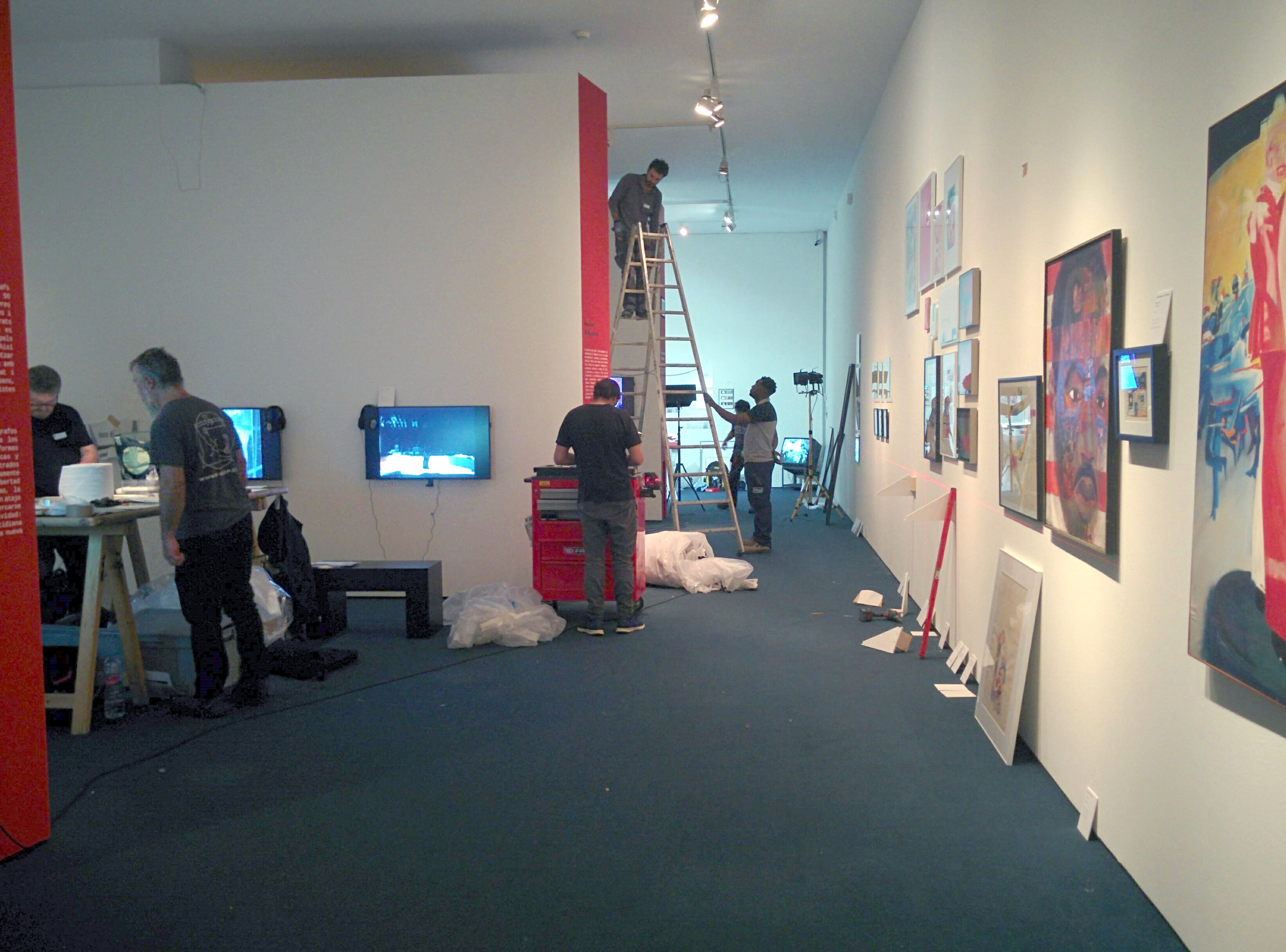Milena Pi
The inauguration of an exhibition sees the conclusion of a series of processes prior to it that increasingly arousing the interest of a restless public. In recent years the cultural institutions have endeavoured to respond to it, visualizing these stages through the graphic and audio-visual recording of assembly work, restoration work, the internal moving of pieces, and so on. In this article I shall present a brief basic overview of the coordination stages of the temporary exhibition Liberxina, Pop and New Artistic Behaviour, 1966-1971, which can be visited until April.
From the idea to the drawing board: the development of the curatorial project
How does it all begin? There can be various reasons for putting on an exhibition: celebrating an anniversary, focusing on the results of research work about an artist, a period. Liberxina came about when the conservator of Modern and Contemporary Art – and curator – Àlex Mitrani and the independent curator Imma Prieto were asked to direct it, in order to begin a new line of work at the Museu Nacional, a series of exhibitions intended to make an analytical interpretation of Catalan post-war art.
It is therefore a documentation and research project.
From this point on, the team that will work on it can be formed. The project comes to the museum’s Registration and Exhibitions Department and it is entrusted to one of the department’s exhibitions coordinators, who from then on will centralize the project.
Everyone begins working on the essential part of the exhibition, the list of works. The curators have been researching for over a year, and through visits to artists, consultations of institutions, archives and catalogues, a list is made of the works it is wished to display. The pieces correspond to the narrative account to be transmitted by the exhibition, and which has been included in the curatorial project.
Requesting loans
At this first stage good data collection is essential. More and more columns have to be added to the Excel: author, title, year, loaner, address and contact person, telephone, email address, size of the pieces, material, state of conservation, how to be mentioned in the credits, photography, rights. It will all reappear along the way and it is all necessary. Once it is all ready the loan request letters can be prepared.
In this exhibition there are 100 works, by 41 artists and 47 loaners.
From the drawing board to the museum space: the museographical project
At the same time you have to leave the drawing board and go down to the exhibition room. What space do we have? What architectural features will condition us?
The designer makes his or her appearance. Their job is to execute the museographical project and design the posters and vinyls. Toni Giró of TAT_lab joins the team, along with Marta Aymar, who is coordinating the graphic production. The result is a document that includes every aspect of the exhibition: the design of the space and the graphics, the construction of structures, the arrangement of the pieces, the measurements, the design of supports, display cabinets and pedestals, specific lighting.
Volume and colour
For Liberxina the designer and the curators work with three basic colours, red, black and white, and the typography of the sections recalls that of the film by Carlos Duran after which the exhibition is named.
The biggest difficulty with this stage was the huge variety of formats: original photographs, new photographs on baritated paper, digitally reproduced photographs on closed-cell PVC foamboard, paper, prints, collages, paintings, sculptures, audio-visual, books, and other objects seldom seen in a museum such as vinyl records.
Determining one by one the way of exhibiting the works while respecting their nature was a real challenge. Would you place a page from a newspaper from 1968 in a wooden frame or an aluminium one? Would you give it a passepartout or not?
Of course, this work would not be possible without consulting the museum’s Preventive Conservation and Restoration team, who will give us guidance about safeguarding the pieces and determining the best way of exhibiting them.
The countdown: from production to inauguration
Three weeks before the inauguration of Liberxina, the focus moves from the office to the exhibition room and to the loading bay. Good footwear, a lot of pockets, measuring tape and a telephone in your hand is the essential kit for initiating the production stage. External teams of professionals begin to take part and the coordination of the schedule (Gantt chart) must be precise.
- The room is made ready, walls are painted and electrical and wooden structures are mounted on them. For Liberxina it was necessary to cut through a partition wall and construct the black room where the fluorescent paintings are placed. The height of the lights to increase their effect and the addition of a curtain are decisions to do with the assembly that have to be made in situ, taking into account the time and the budget.
- Assembly: the works – after being insured and with the transportation sorted out – enter the museum.
- The pieces are unpacked under the supervision of the restorers. In some cases it was necessary to send them to the workshop and to rethink fastening systems.
- Finally, the graphics and the works are installed and the final retouches are made once it is possible to see them all.
Like an orchestra
Constant advance communication with all the museum departments is necessary to avoid rushing and stress. By this stage of the coordination there are a lot of teams involved in it, and all of them – from their own specific areas – are working in the same direction.
Maintenance, museography, restoration, safety and cleaning. Communication, digital strategy, press, marketing, protocol and sponsorship. And in parallel – and from the start – our colleagues in the Publications Department preparing the catalogue.
The inauguration marks the beginning of the public stage of the project, but not the end. The exhibition’s raison d’être is for it to be shared, the idea should be discussed, and works and artists should be discovered. The job of the exhibitions coordinator continues, once more at his or her desk, sorting out any pending formalities and, later, starting to plan the dismantling and the dispersal of the works.
Do you have any questions about the work of a coordinator? If you coordinate exhibitions, would you like to share any experiences?
Related links
Press dossier of the exhibition Liberxina (pdf, 8’2Mb)
Liberxina: The Impetus and Impact of Rebellion
Digital Mèdia

